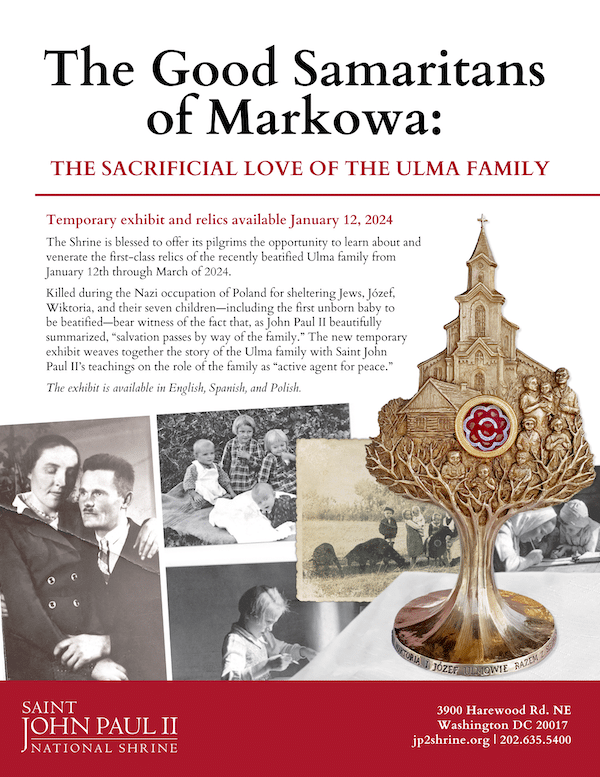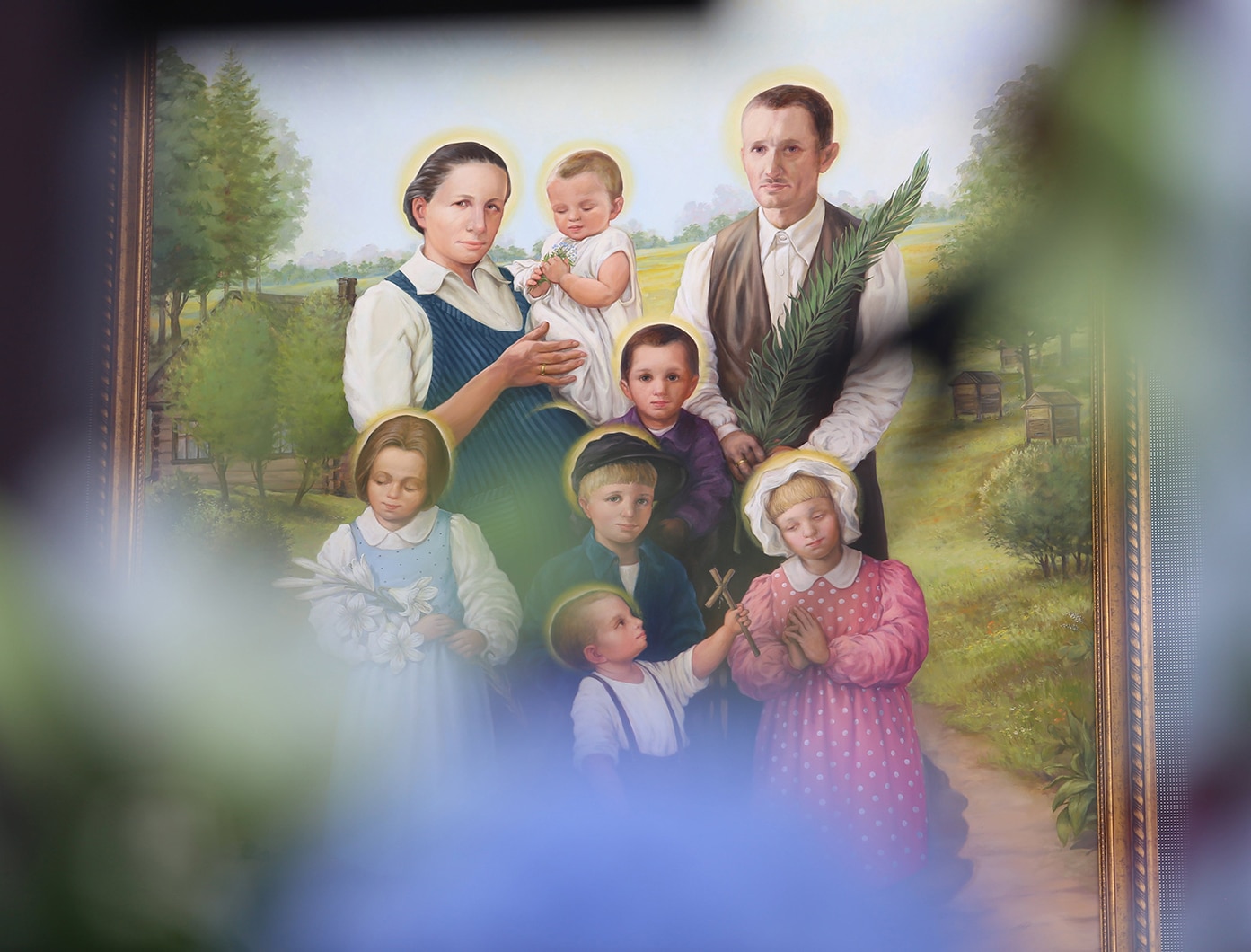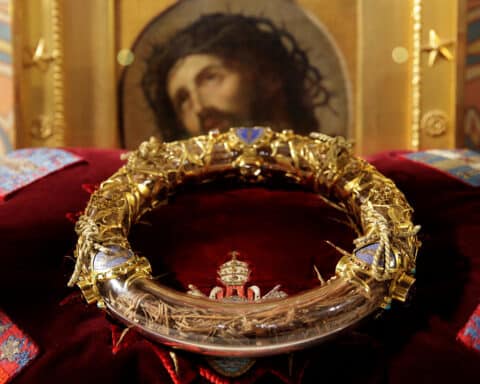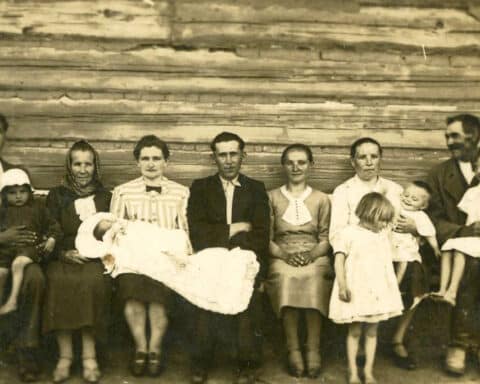For the first time, first-class relics of the Blessed Ulma family — a Polish Catholic family murdered by the Nazis for secretly sheltering Jews during the Second World War — are coming to the United States.
Catholics are invited to venerate the relics and explore a related exhibit at the Saint John Paul II National Shrine in Washington, D.C., beginning on Jan. 12, ahead of the national March for Life.
“We are especially excited to be able to offer this new display for all the pilgrims coming to Washington, D.C., for the 2024 National March for Life,” Sofía Maurette, the shrine’s director of intercultural ministry, said of the nation’s largest annual pro-life rally that advocates for the dignity of the human person, born and unborn.
She added: “We hope that, through the teachings of John Paul II and the testimony of the Ulma family, pilgrims coming to the shrine before or after the March will be renewed in their commitment to build a civilization of love that values the dignity of every human person.”

Józef and Wiktoria Ulma, along with their seven children, were killed by German Nazi police on March 24, 1944 after hiding Jewish families at their home in Markowa, Poland. At the time, Wiktoria was pregnant with the couple’s seventh child who, the Vatican’s Dicastery for the Causes of Saints clarified, was born during the massacre and received a “baptism of blood.”
“We hope that, through the teachings of John Paul II and the testimony of the Ulma family, pilgrims coming to the shrine before or after the March will be renewed in their commitment to build a civilization of love that values the dignity of every human person.”
— Sofía Maurette
The shrine will permanently care for their relics. Through March 24, 2024, the 80th anniversary of the Ulma family’s martyrdom, visitors can venerate the relics and walk through a temporary exhibit about them.
Attendees of Life Fest, a youth rally organized by the Knights of Columbus and Sisters of Life in Washington, D.C., on Jan. 19, the morning of the March for Life, will also have an opportunity to pray with the relics.
The shrine — located at 3900 Harewood Road NE near the Brookland-CUA metro station — offers free admission and free parking for cars and buses. Visitors can enter on weekdays from 10 a.m. until 3:30 p.m. and on the weekends from 10 a.m. until 5 p.m.
A special exhibition
The shrine’s display on the exemplary life of the Ulma family — “The Good Samaritans of Markowa: The Sacrificial Love of the Ulma Family” — centers on the nine recently-beatified members of the Ulma family.
“The exhibit, set to open on January 12, 2024, combines loaner panels from the Polish Institute of National Remembrance, which tell the history of the Ulmas through documents and photos of their daily life, with quotes on Pope John Paul II’s teachings on the family as the cornerstone of the civilization of love,” Maurette said. “It will also include a first-class relic of the Ulma family that will be available for veneration alongside the shrine’s permanent blood relic of St. John Paul II.”
The Ulma family relics
The relics arriving at the shrine consist of remains of all nine members of the Ulma family, including the child who was in the womb when the mother, Wiktoria, was killed, Maurette explained.
“They are housed in a special reliquary that shows an image of the tree of life, from which sprouts each member of the family,” she said. “This reliquary is a replica of the one that was designed and exhibited during the beatification Mass.”

The Ulma family relics come to the shrine through the vision and initiative of Patrick Kelly, the supreme knight of the Knights of Columbus, who was invited to the family’s beatification by the Archbishop of Przemyśl, Most Reverend Adam Szal, Maurette said.
“Upon learning of the heroic life and important witness of the Ulma family, the Supreme Knight asked Archbishop Szal for a relic for the shrine,” Maurette said. “The St. John Paul II National Shrine is incredibly blessed and grateful for the initiative and efforts of Supreme Knight Kelly and for the graciousness of Archbishop Szal, whose response provided more than what we had dared hope.”

A family’s example
Maurette expressed her enthusiasm for the exhibit presented by the Saint John Paul II National Shrine.
“We are very excited to offer our pilgrims the opportunity to learn about the example and venerate the relics of a family that lived out what Pope John Paul II defined as the mission of the Christian family: to be ‘a light, a beacon, that must illuminate the path of the Church and the world in the future,'” she said, citing the pope’s words on Oct. 8, 1994.
“As the photos show, Jozef and Wiktoria Ulma were able to see the dignity of every human person, from each of the seven children they had in their nine years of marriage … to their Jewish neighbors persecuted by the Nazi invaders.”
— Sofía Maurette
She pointed to the example and faithful witness of the Ulma parents.
“As the photos show,” she said, “Jozef and Wiktoria Ulma were able to see the dignity of every human person, from each of the seven children they had in their nine years of marriage (including the baby Wiktoria was carrying when she was killed), to their Jewish neighbors persecuted by the Nazi invaders.”
Citing the pope’s 1994 message for the World Day of Peace, she added, “Against a regime that did not hesitate to execute six children and their pregnant mother, the Ulma family bears witness to the truth that when ‘founded on love and open to the gift of life, the family contains in itself the very future of society; its most special task is to contribute effectively to a future of peace.'”

A connection with St. John Paul II
As pope, St. John Paul II knew of the Ulma family, Maurette said.
The Ulma family’s cause for beatification opened when St. John Paul II still served as pontiff, in 2003, she said. Archbishop Józef Michalik, the archbishop of Przemyśl, Poland, at the time, has confirmed that he spoke about the family with the former pope.
More generally, she said, St. John Paul II repeatedly spoke about how his life and understanding of the Catholic faith was impacted by the heroic witness to the faith of Polish individuals and families like the Ulmas.
“He stated that his priesthood was marked ‘by the great sacrifice of countless men and women of [his] generation’ and by the ‘shining example of those who, from the beginning of the twentieth century to its end, met persecution, violence, death, because of their faith and because their behavior was inspired by the truth of Christ,'” Maurette said, citing his 1999 book “Gift and Mystery” and his homily on May 7, 2000.

Maurette addressed the significance of housing the relics in the shrine named after him.
“[H]osting the Ulma relic at the Shrine of St. John Paul II, which was conceived as an answer to his call to a new evangelization and dedicated to his teachings, fulfills his wishes that the martyrs of the 20th century ‘be remembered and their lives documented,'” she said.
The shrine hopes, she said, that visitors leave inspired by the Ulma family.
“It is our hope that by presenting the exemplary life of the Ulma family,” she added, “pilgrims that come to the St. John Paul II National Shrine can learn more about this heroic family and find in the Ulmas a witness and example of a family who lived to the end Christ’s call to love and peace.”





